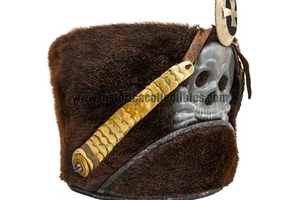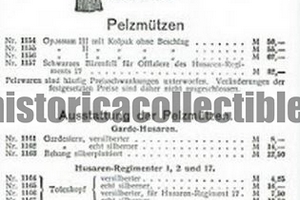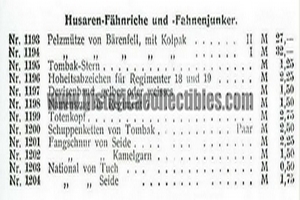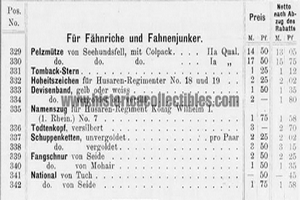Preußen Mannschafts Pelzmütze mod. 1856 Rgt. Reserve "Landwehr" del Leib Husaren, circa 1870
Pelzmütze mod. 1856 Prussian (NCO) issued to a soldier of the Reserves of the Death Hussar Corps. This example, of extremely fine workmanship, is made of natural otter fur and is one of those so-called "elite" models that could be purchased privately (as happened in 70% of cases) by very wealthy people given the high cost of manufacturing. These Pelzmütze were made of natural otter fur (the most expensive and authorized only until 1912 after which it was replaced by Opossum fur), Opossum and bear fur (Traditionally worn by the 17 Hussar Regiment). There were 6 different models of Pelzmütze (unlike the only 3 available models of Pickelhaube) that could be purchased privately with different characteristics: this was considered the most prestigious as well as being the most expensive. It features a brim on both the front and back.
On the "cockade", called the Fatherland Bandeau, the silver Landwehr Cross is applied with the inscription "Für Koenig und Vaterland 1813" (for King and Homeland 1813). This model was in use until 1866, even if its use was unofficially waived until 1880. The skull or rather "Totenkopf" is most likely made of zinc, and had to be polished by manual cleaning, while the subsequent models underwent a silver plating process or even nickel plating.
The term Landwehr refers to the Royal Edict of 17 March 1813, which called up all men fit for arms between the ages of 18 and 45. After 1815 this force was made an integral part of the Prussian army: each brigade consisting of one Landwehr Regiment.
The Landwehr (a German term translatable as territorial defense) is a military institution specific to the countries that later formed the German Empire, Switzerland and the dissolved Austro-Hungarian Empire.
In Germany, in fact in Prussia, it was officially established for the first time with a law of 1813, as a consequence of compulsory military service and included two notices:
First: men aged thirty to thirty-five.
Second: men aged thirty-six to thirty-nine.
Subsequently the latter made the passage into the Landsturm. The Landwehr, whose cadres were mainly made up of members of the bourgeoisie, was not a real fighting force but was seen more as a balance to the weight of the conservative military caste of the Prussian army. With the reform of 1860 each regiment of the regular army had attached a framework regiment of the Landwehr, whose officers and non-commissioned officers came from the regular regiment and with which it formed a brigade. At the outbreak of the 1866 war with Austria-Hungary, the Landwehr numbered 130,000 personnel.











